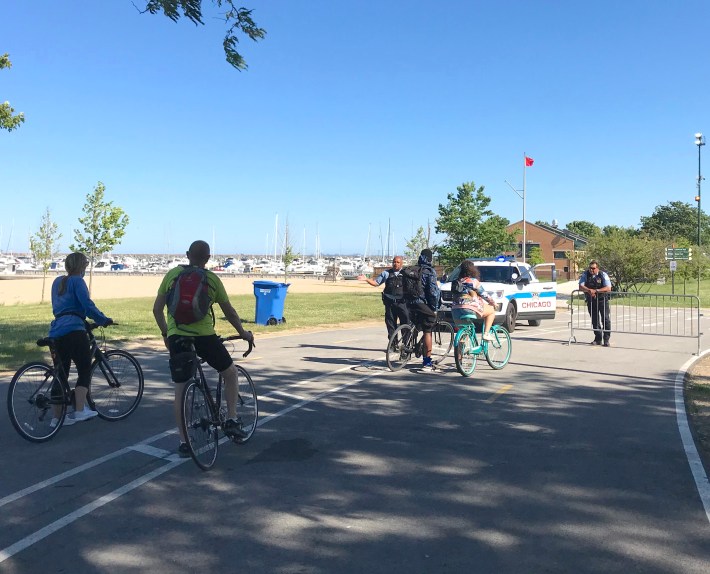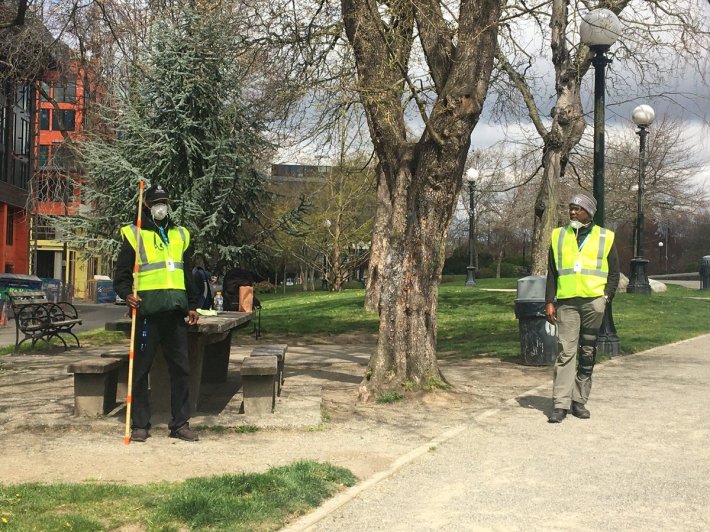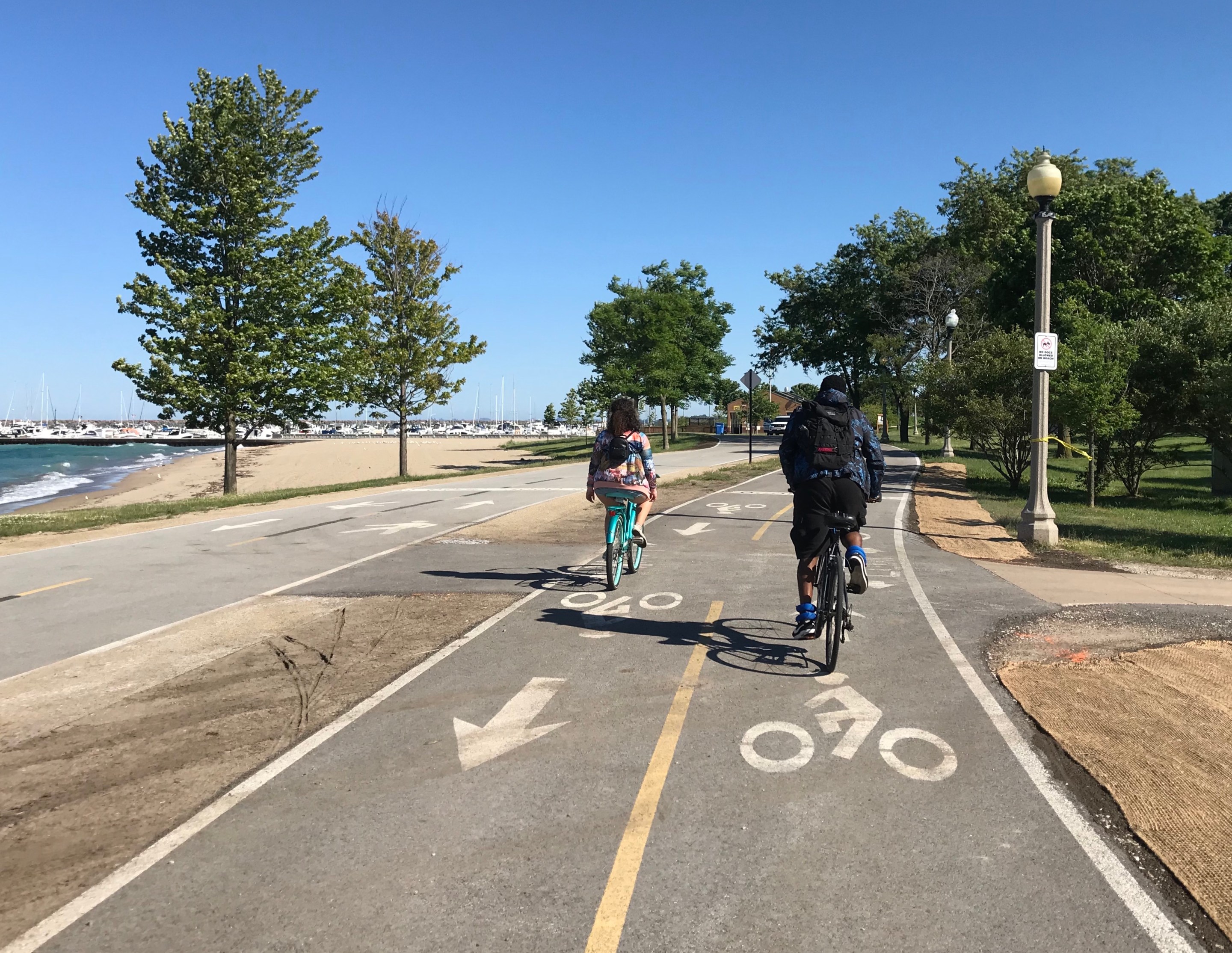Mayor Lori Lightfoot just announced plans to reopen the Lakefront Trail, Chicago's most important car-free commuting route, next Monday, June 22. That's nearly three months after she abruptly closed the shoreline path, the Chicago Riverwalk, and the Bloomingdale Trail on March 26, after there were crowding issues on the paths on one of the first warm days of spring. (Last Friday the riverwalk reopened for cycling, jogging, and exercise walking from 5-10 a.m. only, and a new Slow Streets route opened parallel to the still-closed Bloomingdale.)
Lightfoot's Lakefront Trail strategy uses a couple of ideas that Streetsblog Chicago previously advocated for that have worked well in other cities like Seattle: limiting shoreline access to "keep moving" activities like walking, jogging, and biking; and hiring Social Distancing Ambassadors to encourage compliance with the rules. Unfortunately, the mayor is closing the LFT each day in the early evening, which will make it less useful for commuting.
While Lightfoot reopened shoreline parks west of Lake Shore Drive on Monday June 8, many people on foot and bikes have also been using the trail and beaches lately. In many locations police and security guards seem to disregard these incursions, apparently focusing instead on preventing people from driving to the lakefront, which is a sensible de-facto policy. However, in other spots, officers have been ordering path users to exit the path.

Under the new policy, the Lakefront Trail will be open from 6:00 a.m. to 7:00 p.m. daily, but beaches and parks east of Lake Shore Drive will remain off-limits. The path will only be open open for transportation and "keep moving" exercise, such as walking, running, biking, and rollerskating. Stationary activities like hanging out on walls or benches, picnicking, and fitnesses classes will not be permitted.
The city says that "to effectively monitor and control use," the Chicago Park District will only open about half of the bridges, underpasses, and street entrances to the trail. That currently seems like a moot point, since just about all of the barriers at unguarded bridges and underpasses are currently missing or easily breached, but perhaps some of these will be reinstalled. Along with park district security, police officers and Office of Emergency Management and Communication staff will continue to patrol the street entrances.
The park district will install signs along the trail to inform and remind users about social distancing requirements and the "keep moving" rule. The Social Distancing Ambassadors will do outreach to the public about these regulations, the importance of wearing face coverings, and other health and safety guidelines.

Parking lots east of the drive will remain closed, as will outdoor fitness equipment, basketball courts, tennis courts, and athletic fields. While separate walking and biking paths were built on the lakefront within the last few years, due to winter storm damage to the trail and high lake levels, pedestrians and cyclists will have to share the sections of the path on higher ground between Fullerton and North Avenue. Between North and Ohio Street, trail users will be redirected to an on-street detour. Inner Lake Shore Drive would be a reasonable alternative for confident cyclists. Between 43rd Street and 51st Street, users again have to share one path. Hopefully these sections will be repaired in the near future so that normal trail use can resume.
While the reopening of the trail is generally good news, not everyone is thrilled about the policy, such as essential worker Kyle Lucas, whose online petition to reopen the trail for bike commuting carnered more than 1,600 signatures.
But the hours make no sense, and are bad for essential workers.
— kyle tear down that highway lucas (@itskylelucas) June 15, 2020
6am - 7pm means people will be rushing to the LFT to get their time in while it’s available. Seems like it’ll encourage crowding. Essential workers who don’t work a 9-5 are left back on the streets.
The new hours are definitely preferable to the Chicago Area Runner's Association's previously proposal to only reopen the path between 5 a.m. and 10 p.m. "Sure, but that doesn’t make it a win," Lucas said.
Personally, I'd rather see the glass as half-full and celebrate the fact that, after almost a quarter of a year, Chicagoans will be allowed to legally use their lakefront once more.






